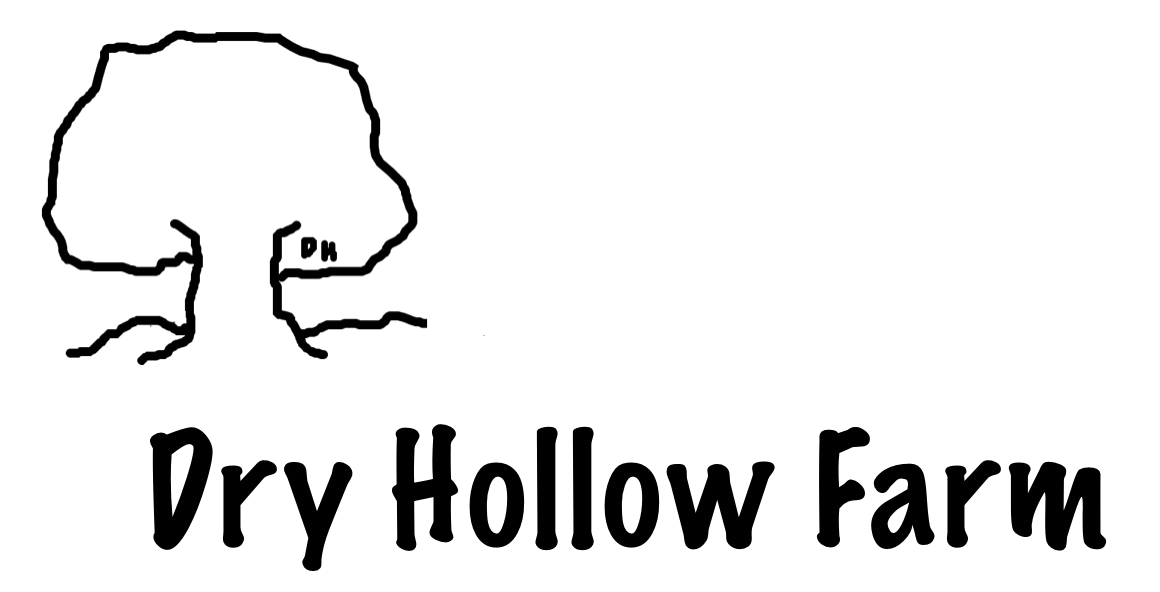After the Sheep-Shearing
Jacob wool is a coarse, thick wool valued by hand-spinners and artisan crafters.
Our first action after shearing is to skirt the fleece and remove all the bits and pieces of wool that are filled with muck from the animal’s underbelly or backside. These scrappy pieces are of no use, and we throw them away. What remains is the beautiful, thick fleece ready for working.
The next step is to wash the wool. This is a multi-step process that begins with soaking the fleece in cold water after picking out as much debris as possible. Our fleece tends to hold a fair amount of vegetable matter because we do not place coats on our animals throughout the year. The cold water soak helps to loosen the dirt and grime accumulated after what is usually a damp and muddy spring.
At this point, we move the fleece into the house for hot water washing. We place a large plastic bin in a bathtub with a piece of screen mesh taped across the drain for the successive washings. The first is the hottest with a mild detergent added to begin breaking up the lanolin and remaining dirt. Jacob sheep are low lanolin, so the wool washing process is fairly simple.
After the hot water, we repeat with successive rinsings as we gradually decrease the water temperature. When the water runs clear (usually after eight or so rinsings), the cleaning process ends with one last cold water soak.
Drying wool can take up to two days, depending upon the heat and temperature. We like to wash as much wool as possible in the summer months with high temperatures and sunny days.
Recently, we began spreading the fleece in a lean-to greenhouse which quickened our drying time dramatically.
In the winter, we use our fireplace.
Once the fleece are dried, we then turn to combing and carding the wool. When I first began, I used hand carders for this task. As time passed, I upgraded to a hand-cranked drum carder, and finally a mechanized electric carder. There is a vast difference between processing three or four fleece after shearing and twenty-five awaiting fleece.
The carding process straightens and lengthens the fibers, removes more vegetable matter, and prepares the wool for spinning or felting. If spinning, we would run through the wool fibers through the carding process twice. However, most of our wool is used to create felted wool dryer balls. This means that the wool will go through another series of hot water, agitation washes in the felting process that won’t require the beautiful battings multiple cardings produce.
Converting a dirty wool fleece into something soft and functional, whether a scarf, socks, a sweater, or eco-friendly dryer balls, requires a time and energy commitment. Each year we watched our sheep slowly grow out thick and heavy wool in a natural, environmentally-friendly process that creates fiber for a multitude of uses.
Dr. Kathryn Bush owns and operates Dry Hollow Farm, a working goat and sheep farm in Huntingdon, Tennessee. Together with her husband, Russell, she creates skincare products from their fresh goat milk, grows organic herbs, welcomes visitors to their two cabins on the farm (available for stays through Airbnb), keeps the farm’s on-site soap shop stocked with their handcrafted products, and enjoys working the farm in company with their Great Pyrenees dogs (who work hard guarding the animals). Check out their natural products featuring farm-grown ingredients here, and sign up for the Dry Hollow Farm newsletter to stay in touch and be the first to hear about farm news, events, and new products.

